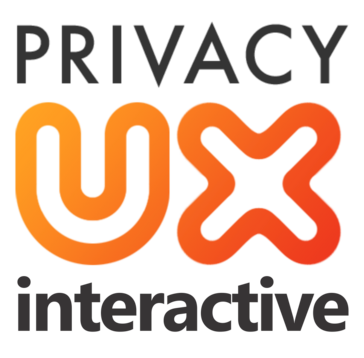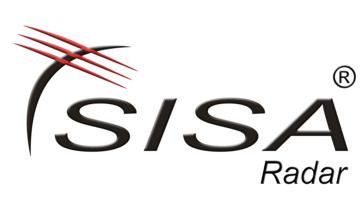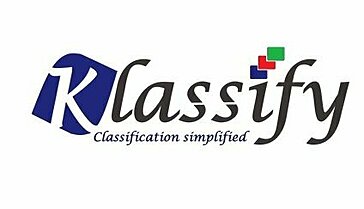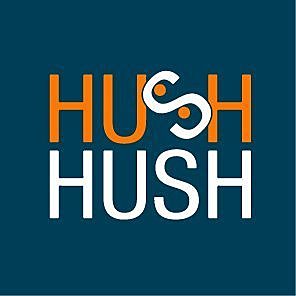3.75
Netwrix Data Classification Review
Discover our Netwrix Data Classification review. We cover features, security, pricing, support, and updates. See if its value for money fits your needs!
Comprehensive overview and target audience
Netwrix Data Classification provides organizations with crucial visibility into their sensitive and regulated data across diverse storage locations; think file servers, cloud storage, and databases. Its primary function is to automatically discover, classify, and tag this information according to its sensitivity level and compliance requirements. This process is fundamental for mitigating data breach risks and ensuring regulatory adherence.
The platform is specifically designed for businesses grappling with complex compliance mandates like GDPR, HIPAA, CCPA, PCI DSS, and others. Key personnel who find significant value include:
- Information Security Managers needing to locate and protect critical data assets.
- Compliance Officers tasked with proving adherence to regulations.
- Data Privacy Officers focused on minimizing exposure of personal information.
- IT Administrators seeking automated tools to manage unstructured data growth and risk.
Core capabilities revolve around robust **Netwrix Data Classification security features**. These include precise content discovery using predefined templates and custom rules, automated data tagging for consistent classification, risk scoring to prioritize remediation efforts, and workflow integrations for actions like quarantine or access restriction. The software empowers proactive data security rather than reactive cleanup.
Considering the investment, evaluating the **Netwrix Data Classification value for money** is essential. The platform aims to deliver substantial return through reduced compliance costs, minimized breach impact, and improved operational efficiency in data management. Regular **Netwrix Data Classification updates and new features** ensure the tool evolves alongside threats and regulations, enhancing its long term value proposition. When considering acquisition, undertaking a **Netwrix Data Classification pricing comparison** with alternative solutions is advisable, factoring in the breadth of features and supported platforms.
To ensure successful deployment and ongoing use, Netwrix offers comprehensive **Netwrix Data Classification support and training resources**. This includes access to technical documentation, knowledge bases, online tutorials, and customer support channels, helping teams maximize their investment and effectively leverage the platform’s full capabilities for better data governance and security posture.
User experience and functional capabilities
Delving into the Netwrix Data Classification user experience insights reveals a platform designed with clarity in mind, although initial navigation can present a learning curve for those unfamiliar with data classification concepts. The central dashboard provides a consolidated view of data risk, classified files, and task progress, offering a good starting point. Understanding how to use Netwrix Data Classification effectively often begins here, interpreting the presented metrics and drilling down into specific data repositories or risk areas. While generally intuitive, mastering the nuances of rule creation and policy configuration requires dedicated attention and potentially leveraging the available support resources.
Functionally, the software excels at its core mandate: automated data discovery and classification across heterogeneous environments. Setting up scans involves defining targets like file shares or cloud storage and selecting classification taxonomies; these can be predefined for regulations like GDPR or HIPAA, or customized to specific organizational needs. The system then analyzes content and metadata, applying tags accordingly. This process underpins its value proposition. However, achieving optimal accuracy often requires iterative refinement of the classification rules, which can be one of the common problems with Netwrix Data Classification if not anticipated. Fine tuning helps minimize false positives and ensures genuinely sensitive data is correctly identified.
Getting started typically involves following the Netwrix Data Classification implementation guide, which outlines steps for installing components, configuring initial connections, and setting up basic scans. The complexity can vary depending on the scale and diversity of the IT environment. Integrating Netwrix Data Classification with other tools is a significant capability; it often works alongside SIEM systems, Data Loss Prevention solutions, or broader Data Governance platforms. This integration allows classification tags to inform security policies and automate response actions, such as quarantining files or alerting security teams, thereby amplifying its protective value.
Netwrix demonstrates a commitment to enhancing the platform through regular Netwrix Data Classification updates and new features. These updates often include expanded data source support, improved classification algorithms, enhanced reporting capabilities, and refinements to the user interface based on feedback. Adhering to best practices for using the tool is crucial for maximizing its effectiveness. This includes regularly reviewing and updating classification rules, periodically auditing classification results for accuracy, managing user access controls strictly within the platform, and leveraging reporting features to demonstrate compliance and track risk reduction over time. Careful planning and ongoing management ensure the platform delivers sustained value for data security and compliance objectives.
Who should be using Netwrix Data Classification
Netwrix Data Classification is ideally suited for a wide range of organizations grappling with the complexities of modern data management, security, and regulatory compliance. Any entity handling sensitive information, regardless of size or industry, can benefit significantly from its capabilities. However, certain roles and organizational contexts stand to gain the most direct advantages.
Specifically, the platform is essential for:
- Information Security Teams: Tasked with protecting valuable data assets from breaches and unauthorized access. They use it to identify where sensitive data resides, assess associated risks, and apply appropriate security controls.
- Compliance and Data Privacy Officers: Responsible for ensuring adherence to regulations like GDPR, HIPAA, CCPA, and PCI DSS. Netwrix Data Classification provides the necessary visibility and documentation to demonstrate compliance and manage data subject access requests effectively.
- IT Administrators: Facing challenges with data sprawl across on premises and cloud storage. The tool helps them regain control over unstructured data, automate classification, and support data governance policies without manual effort.
- Risk Management Professionals: Focused on identifying and mitigating organizational risks. Data classification allows them to understand the potential impact of data exposure and prioritize remediation efforts based on data sensitivity.
A typical Netwrix Data Classification use case scenario involves an organization preparing for a compliance audit. The tool scans file servers and cloud repositories, automatically identifying and tagging files containing personal identifiable information or financial data relevant to the specific regulation. This allows the compliance team to quickly locate relevant data, assess security controls around it, and generate reports proving adherence, significantly reducing manual effort and audit stress.
Furthermore, organizations undergoing digital transformation projects, migrating data to the cloud, or managing mergers and acquisitions will find Netwrix Data Classification invaluable for maintaining visibility and control over sensitive data throughout these transitions. Implementing Best practices for Netwrix Data Classification, such as regular policy reviews and user training, ensures these diverse users maximize the platform’s effectiveness in safeguarding critical information and meeting their specific objectives.
Unique Features offered by Netwrix Data Classification
Netwrix Data Classification stands out not just for its core functionality but also for its significant customization options and unique features, allowing organizations to tailor the tool precisely to their needs. This adaptability ensures the platform remains effective as business requirements change.
Extensive customization is a cornerstone. While Netwrix provides robust predefined templates for major regulations, its real power lies in letting you define your own rules. Key customization capabilities include:
- Creating custom classification taxonomies reflecting unique business data or industry specifics.
- Developing granular rules based on keywords, regular expressions, and context specific criteria relevant only to your organization.
- Adjusting sensitivity levels and risk scoring parameters to align with your internal data governance policies.
This level of control is vital when Customizing Netwrix Data Classification for business growth, ensuring the system evolves alongside your data landscape. Furthermore, its architecture supports scalability, making Netwrix Data Classification for small businesses a practical choice, offering sophisticated capabilities without excessive complexity.
Unique features enhance its value proposition. Accurate content inspection goes beyond simple pattern matching, understanding context to reduce false positives. Automated persistent tagging ensures classifications are consistently applied and recognized by other systems. A crucial aspect involves Integrating Netwrix Data Classification with other tools. Its classification insights can inform actions within SIEM platforms, Data Loss Prevention solutions, and identity management systems, automating responses like quarantining files or restricting access based on data sensitivity. This seamless integration creates a more proactive and cohesive data security posture.
Pain points that Netwrix Data Classification will help you solve
Many organizations struggle with the overwhelming challenge of identifying and protecting sensitive information scattered across their complex IT infrastructure. This lack of visibility often leads to significant security vulnerabilities and compliance failures. Netwrix Data Classification directly addresses these critical pain points, providing clarity and control over your data landscape.
Here are key challenges the platform helps you overcome:
- Finding sensitive data: Locating specific types of regulated or critical information like PII, PHI, or intellectual property across diverse data stores, both on premises and in the cloud, is often like searching for a needle in a haystack. Netwrix automates this discovery process, telling you exactly what sensitive data you have and where it resides.
- Meeting complex compliance demands: Demonstrating adherence to regulations such as GDPR, HIPAA, CCPA, or PCI DSS requires precise knowledge of relevant data locations and controls. Netwrix streamlines compliance by automatically identifying and classifying regulated data, simplifying audit preparation and reporting.
- Reducing data breach exposure: Uncontrolled data sprawl increases the risk of sensitive information falling into the wrong hands. By accurately classifying data based on sensitivity and applying persistent tags, Netwrix enables you to prioritize security efforts and enforce appropriate access controls, minimizing your attack surface.
- Eliminating manual classification efforts: Relying on users or IT staff to manually classify vast amounts of data is inefficient, inconsistent, and prone to errors. Netwrix automates classification based on predefined or custom rules, saving significant time and resources while improving accuracy.
- Adapting to changing needs: Business growth and evolving data landscapes require flexible solutions. The platform supports Customizing Netwrix Data Classification for business growth, ensuring your classification strategy remains effective. Its capabilities are valuable across Netwrix Data Classification for different businesses sizes, from smaller companies to large enterprises.
- Enhancing security tool effectiveness: Isolated security tools often lack context about data sensitivity. Integrating Netwrix Data Classification with other tools, such as SIEM or DLP solutions, enriches their effectiveness by allowing automated actions based on data classification, creating a more responsive security ecosystem.
By tackling these common issues, Netwrix Data Classification empowers organizations to regain control over their data, strengthen security posture, ensure regulatory compliance, and manage risk more effectively.
Scalability for business growth
As organizations expand, their data footprint inevitably grows, becoming more complex and distributed across various environments. Netwrix Data Classification is built with this reality in mind, offering robust scalability to support business growth effectively. Its architecture is designed to handle increasing volumes of data without sacrificing performance, ensuring that discovery and classification processes remain efficient even as your digital assets multiply across file servers, cloud storage platforms like Microsoft 365 or Google Drive, and databases.
This scalability extends beyond mere data volume. The platform adapts to the evolving needs of a growing business. As you enter new markets, launch new products, or face new regulatory landscapes, your data classification requirements will change. Customizing Netwrix Data Classification for business growth is straightforward; you can easily refine existing rules, add new taxonomies specific to emerging business units or compliance mandates, and adjust risk scoring to reflect shifting priorities. This ensures your data governance strategy remains aligned with your operational reality.
Furthermore, scalability involves adapting the deployment model and integrations:
- Supporting expanding infrastructure: Netwrix can seamlessly incorporate new data repositories whether they are on premises or in different cloud environments, providing consistent visibility.
- Integrating with a broader security ecosystem: As your security stack matures, Netwrix integrates with more tools like advanced SIEMs, SOAR platforms, or enhanced DLP solutions, amplifying the value of classification data across your security operations.
- Adapting features: The platform allows for Customizing Netwrix Data Classification for business scalability, meaning you can tailor its capabilities and reporting to meet the demands of a larger, more complex organization.
This inherent adaptability ensures that Netwrix Data Classification is not just a solution for today but a long term investment. It grows alongside your company, preventing the need for costly and disruptive platform replacements down the line. This sustained performance and flexibility are crucial for maintaining a strong security and compliance posture throughout your business journey, providing peace of mind as you scale operations.
Final Verdict about Netwrix Data Classification
Netwrix Data Classification emerges as a powerful and comprehensive solution designed to tackle the critical challenges of data visibility, security, and compliance in today’s complex IT environments. Its core strength lies in its ability to automatically discover, accurately classify, and persistently tag sensitive and regulated data across a wide array of storage locations, both on premises and in the cloud. This automation significantly alleviates the burden of manual classification, reducing errors and saving valuable time for security and IT teams.
The platform directly addresses significant pain points for organizations:
: Locating dispersed sensitive data.
: Meeting stringent regulatory requirements like GDPR, HIPAA, and CCPA.
: Minimizing data breach exposure through risk prioritization.
: Improving the efficiency of data governance practices.
While mastering its full range of features, particularly the customization of classification rules, may involve an initial learning curve, the investment is justified by the level of control and precision it offers. The extensive customization options allow businesses to tailor the system precisely to their unique data landscape and compliance obligations. Furthermore, its capacity to integrate seamlessly with other security tools like SIEM and DLP solutions enhances its overall value, transforming classification insights into actionable security intelligence.
Scalability is another key advantage, ensuring the platform can grow alongside an organization’s expanding data volumes and evolving infrastructure without compromising performance. It supports diverse business sizes and adapts effectively to changing needs.
Ultimately, the Final verdict on Netwrix Data Classification is highly positive. It provides essential capabilities for any organization needing to gain control over its sensitive data. Its robust feature set, focus on automation, customization potential, and scalability make it a formidable contender in the data classification market, delivering tangible value in risk reduction and compliance adherence.
Advantage
Disadvantage
Locate sensitive data across all repositories
Automate data classification and tagging accurately
Reduce sensitive data exposure risk effectively
Simplify regulatory compliance (GDPR, CCPA, etc.)
Enhance data security and access governance
Disadvantage
Complex initial setup and configuration process
Can be resource-intensive on monitored systems
Potential for higher cost compared to alternatives
Steeper learning curve for advanced features
Rule tuning needed to minimize false positives
Rating
Web Based
Windows
Mac OS
Linux
Android
iOS
Phone Support
Email/Help Desk
AI Chat Bot
Live Support
24/7 Support
Forum & Community
Knowledge Base
Live Online
Documentation
Videos
In Person
Webinars
Company: Netwrix
Email: info@netwrix.com
Address:
1000 Town Center Drive, Suite 1250, Costa Mesa, CA 92626, USAPhone: +1 (949) 754-9411
Implementation
Web Based
Windows
Mac OS
Linux
Android
iOS
Support
Phone Support
Email/Help Desk
AI Chat Bot
Live Support
24/7 Support
Forum & Community
Knowledge Base
Training
Live Online
Documentation
Videos
In Person
Webinars
Group text
Company: Netwrix
Email: info@netwrix.com
Address:
1000 Town Center Drive, Suite 1250, Costa Mesa, CA 92626, USA
Phone: +1 (949) 754-9411
Alternative Products
Frequently Asked Questions
Is Netwrix Data Classification worth it?
For organizations grappling with large volumes of unstructured data and stringent compliance requirements, Netwrix Data Classification offers significant value by providing deep visibility into sensitive data, automating classification, and reducing exposure risk, making it a worthwhile investment in data security and regulatory adherence.
How can Netwrix Data Classification help me?
Netwrix Data Classification empowers you to automatically discover, accurately classify, and secure sensitive, regulated, and mission-critical data across your storage repositories, helping minimize data breach risks, enforce security policies, streamline compliance efforts, and make informed decisions about data access and retention.
What types of data can Netwrix Data Classification identify?
The platform can identify a wide spectrum of sensitive data types, including personally identifiable information (PII) like social security numbers and credit card details, protected health information (PHI), financial records, intellectual property, confidential business documents, and data subject to regulations like GDPR, CCPA, HIPAA, PCI DSS, and more, using pre-built and customizable classification rules.
Where can Netwrix Data Classification scan for data (on-prem, cloud)?
Netwrix Data Classification provides broad coverage, scanning data stored both on-premises (e.g., Windows file servers, NetApp filers, EMC devices, SharePoint) and in cloud environments (including Microsoft 365 – SharePoint Online, Exchange Online, OneDrive for Business – Azure Files, Windows Servers in EC2, AWS S3). It also supports scanning structured data within SQL databases.
How does it help achieve regulatory compliance (GDPR, HIPAA, etc.)?
It directly supports compliance mandates like GDPR, HIPAA, CCPA, PCI DSS, and others by locating regulated data across your environment, classifying it according to sensitivity and regulatory relevance, identifying overexposed data or inappropriate access permissions, facilitating data subject access requests (DSARs), and providing reports essential for audits and demonstrating due diligence.
Is Netwrix Data Classification easy to deploy and use?
While any enterprise data classification tool requires initial configuration, Netwrix Data Classification is designed for relatively straightforward deployment and usability, featuring a web-based console, pre-defined templates for common regulations, and workflows that simplify scanning, classifying, and remediating risks compared to manual methods.
What are the key features that differentiate it from competitors?
Key differentiators often include its high accuracy driven by compound term analysis technology (understanding context beyond simple keywords), seamless integration with Netwrix Auditor for enriched context (linking data discovery with user activity monitoring), broad hybrid environment support, and its focus on delivering actionable insights for risk remediation.
What kind of support and resources does Netwrix offer for this product?
Netwrix provides comprehensive support including technical assistance via phone, email, and a customer portal, an extensive online knowledge base with documentation and guides, community forums for peer-to-peer support, and professional services for deployment assistance and optimization.








